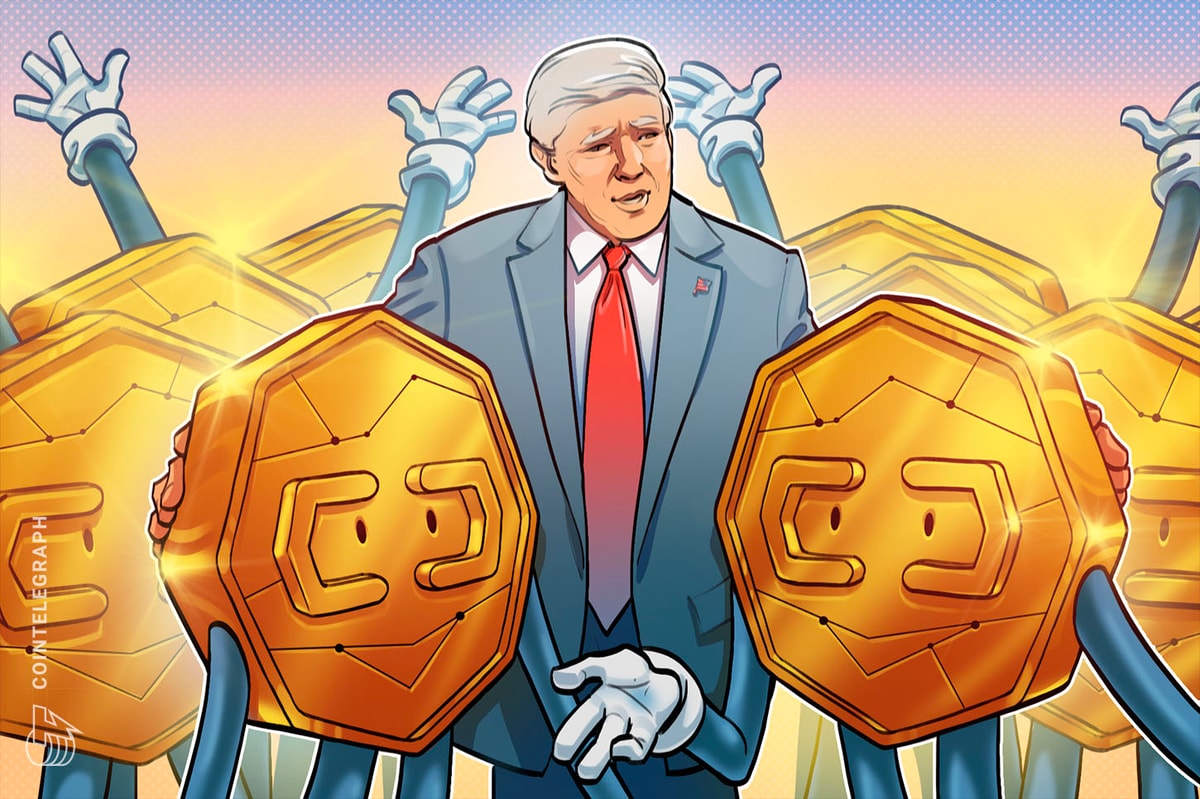Many in the crypto community believed that US President Donald Trump’s second-term election would send Bitcoin prices skyrocketing, and it did — from
Many in the crypto community believed that US President Donald Trump’s second-term election would send Bitcoin prices skyrocketing, and it did — from $69,374 on Election Day (Nov. 5) to a record $108,786 when the new administration took office on Jan. 20.
But since that time, the price of Bitcoin (BTC) has mostly fallen, dropping below $80,000 on Feb. 28 — a 26% decline.
The new administration stormed into office committed to establishing a strategic crypto reserve, crypto-friendly cabinet appointments, and market-structure reform legislation, among other changes. It has mostly delivered on its promises so far.
Still, it’s not too early to ask: Has the “Trump effect,” the surge in Bitcoin’s price anticipated from the election of America’s first crypto-friendly president, been oversold?
Perhaps macro factors, like a looming tariff war and a weakening global economy, are to blame for the slumping market prices. Then there was the Bybit hack in late February, which drained $1.4 billion from the world’s second-largest crypto exchange by volume. Perhaps the Trump administration itself is even to blame for fostering chaos and insecurity in its first six weeks in office?
“Macro factors and crypto blowups combine to erode confidence,” noted Bloomberg on Feb. 25. Elsewhere, the Financial Times observed that while some investors were hoping Trump’s election would herald a golden era for crypto, others, such as prominent US hedge fund Elliott Management, were warning that Trump’s embrace of crypto could lead to an “inevitable collapse” that “could wreak havoc in ways we cannot yet anticipate.”
A “healthy correction”?
“While the recent Bybit situation has been significant, Bitcoin’s price momentum shift started well before the record-setting $1.46 billion hack,” Garrick Hileman, an independent cryptocurrency analyst, told Cointelegraph.
Indeed, the correction follows traditional market cycles — i.e., a “classic” case of “buy the rumor, sell the news,” said Hileman, further observing:
“The largest crypto gains occurred leading up to and just after Trump’s election victory, so a market cooldown was expected and may even be a healthy correction.”
Moreover, cryptocurrencies are more intertwined with traditional markets these days, making crypto prices sensitive to macroeconomic concerns like inflation, interest rates and trade tensions. “These broader economic pressures are dampening risk appetite across the board,” noted Hileman.
Related: Timeline: Trump’s first 30 days bring remarkable change for crypto
Justin d’Anethan, head of sales at token launch advisory firm Liquifi, agreed that the market has simply experienced a traditional “buy the rumor, sell the news” circumstance.
Enthusiasm about potential pro-crypto policies under a new US administration drove prices to record highs, but enthusiasm turned to pessimism with questions about policy implementation timelines. “With no immediate regulatory changes materializing, the market corrected,” d’Anethan told Cointelegraph.
Add the Bybit hack, for which the Federal Bureau of Investigation has blamed North Korea, and “you get a severely undermined investor confidence,” he continued. Moreover, the subsequent laundering/liquidation of the stolen assets across various platforms “has created very real downward pressure on the market,” even as Strategy (formerly MicroStrategy) acquired a massive amount of Bitcoin, d’Anethan added.
Trends remain positive
Still, “The long-term outlook remains positive,” James McKay, founder and principal of McKayResearch, a digital assets consultancy, told Cointelegraph. “We’ve never had a bull cycle that wasn’t interspersed with multiple 30%, 40% or even 50% corrections.”
“We’ve had more positive regulatory developments in the past year than over the previous four years combined,” McKay said, including the Securities and Exchange Commission’s repeal of SAB 121 on Jan. 23, “which will allow mainstream financial institutions to custody crypto.”
Nevertheless, some uncertainty about Trump’s policies may still be creeping in, even as optimism remains high, Hileman suggested:
“Questions remain about whether key initiatives — such as a formal ‘crypto council’ or a national Bitcoin reserve — will actually materialize.”
On March 2, for example, it was reported that the crypto reserve plan still required a congressional vote.
“If Trump’s promises stall or fail to meet expectations, sentiment will dampen further,” Hileman opined.
“Effects are still unfolding”
Maybe the crypto sector was overly optimistic following the US November elections?
Hileman doesn’t think so. “The positive impact of Trump’s election on crypto markets is real, but its effects are still unfolding,” he added.
Crypto-friendly cabinet and agency appointments like Paul Atkins at the SEC, Howard Lutnick at the Department of Commerce, and David Sacks as…
cointelegraph.com
